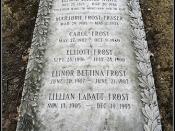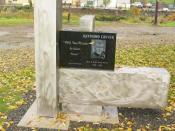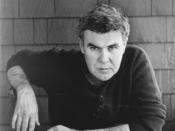Raymond Carver was born on May 25, 1938 in Clatskanie Oregon. Carver's father worked in a local sawmill and was an alcoholic, which no doubt had some influence on Carver's own alcohol problem. Between ages 18 and 21 Carver got married and had two children. He and his bride of 16, Mary, were wed for twenty long years. Carver believed hard work would provide for his family's needs and see them through all of life's troubles. However, poverty and his alcoholism later led to divorce. Alcoholism eventually led to illnesses resulting in Carver having a number of seizures after which doctors urged him to stop drinking. Later, a sober Carver married Tess, who was with him for eleven years and nurtured him until he died of lung and brain cancer in 1988.
Often, Carver said he had led two lives. In his first life, minimal-paying work, alcoholism and unrelieved responsibility to his children were reflected in his writing.
These writings were often depressing, dreary and ended abruptly, seeming to leave readers unfulfilled. The "Cathedral" marked the turning point and beginning of his second life. Alcohol free, Carver had a new life and was amazed at the clearness his world began to take on; he began to see things in a new light. He struggled to show that imagination was a means of speaking through his writing that was now fuller and more stretched out than his previous work.
Carver's short story "Cathedral is about a man waiting and not looking forward to the arrival of a blind man visiting his home. The blind man, Robert is an old friend of his wife's. Robert called the husband Bub, who narrates the story as a participant in a2normal conversational tone. When the husband stated, "A blind man in my house was not...


